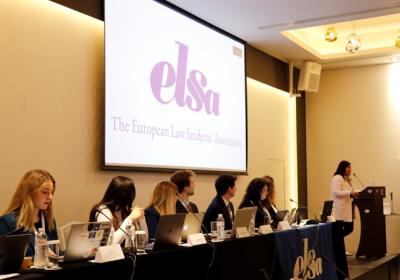Our Intellectual Property Alert provides an overview of recent developments in intellectual property legislation, including the decision issued by the Opposition Division of the European Union Intellectual Property Office (EUIPO) concerning a trademark opposition based on likelihood of confusion.
A. Introduction
B. EUIPO's Examination
C. Conclusion
A. Introduction
1. The Opposition Division of the European Union Intellectual Property Office (EUIPO) issued on 13 February 2024 its decision on an opposition filed on the basis of likelihood of confusion (Article 8(1)(b) EUTMR), making interesting references to the so-called principle of neutralization. The trademarks in question (Trademarks) were the following:
| JOE’S |  |
| Earlier Mark | Contested Mark |
B. EUIPO’s Examination
1. Before proceeding with the examination of the case-at-hand, EUIPO reiterated that a likelihood of confusion exists if there is a risk that the public might believe that the goods in question come from the same undertaking or from economically linked undertakings.
Whether a likelihood of confusion exists between Trademarks depends on the appreciation in a global assessment of several interdependent factors.
2. These factors include:
a. The similarity of the goods and services: In the present case, EUIPO concluded that some of the disputed goods are identical (e.g. the contested flavoured popcorn, which is included in the opponent’s broader category of popcorn. However, EUIPO did not undertake a full comparison of the goods and services, for reasons of procedural economy.
b. The relevant public: According to EUIPO, the average consumer of the relevant product category concerned is deemed to be reasonably well informed and reasonably observant and circumspect. In the present case, the goods target the public at large and the degree of attention is average.
c. The distinctiveness of the earlier mark.
3. According to previous jurisprudence of the Court of Justice of the European Union and EUIPO :
a. the overall impression given by the marks, including their distinctive and dominant components shall be the basis of the global appreciation of the visual, aural or conceptual similarity of the marks in question.
b. the verbal component of the sign usually – but not automatically - has a stronger impact on the consumer than the figurative component.
c. the consumers generally tend to focus on the beginning of a sign, because the public reads from left to right, and therefore the part placed to the left of the sign catches the attention of the reader first.
4. However, pursuant to the principle of neutralization, ’where at least one of the signs at issue has a clear and specific meaning that can be grasped immediately, the resulting conceptual difference may offset the visual and aural similarity between the signs’ . Νοtwithstanding the above, EUIPO noted in its decision that the principle of neutralization can only be applied exceptionally.
5. According to EUIPO’s examination of the likelihood of confusion, the Trademarks are:
a. visually similar to a low degree, since they coincide in the letter sequence ‘*OE’S’, but their impactful first letter is different;
b. aurally similar to an above-average degree, but the figurative element of the Contested Mark, due to its positioning, is as important as the verbal element and has a significant impact on the overall visual impression, which cannot go unnoticed; and
c. conceptually dissimilar, since they refer to ownership by, or association with different persons and the Contested Mark’s concept of a bearded face has no counterpart in the Earlier Mark.
C. Conclusion
1. Following EUIPO’s global assessment, despite some similarity between the Trademarks, their conceptual and visual differences are so overwhelming that neutralize any risk that the public might believe that the goods in question come from the same or economically linked undertakings. Therefore, there is no likelihood of confusion and EUIPO rejected the opposition.
2. In conclusion, the EUIPO decision is important in the sense that it accepts the application of the principle of neutralization, even in cases of visual and aural similarities, which are however offset by conceptual dissimilarities.
1 11/11/1997, C 251/95, Sabèl, EU:C:1997:528, § 23; 14/07/2005, T 312/03, SELENIUM-ACE / SELENIUM SPEZIAL A-C-E (fig.), EU:T:2005:289, § 37; 31/01/2013, T 54/12, KSPORT (fig.) / K2 SPORTS, EU:T:2013:50, § 40; 23/11/2010, T 35/08, ARTESA NAPA VALLEY (fig.) / ARTESO (fig.), EU:T:2010:476, § 37.
2 12/01/2006, C 361/04, PICARO / PICASSO, EU:C:2006:25, § 20; 05/10/2017, C 437/16 P, CHEMPIOIL / CHAMPION et al., EU:C:2017:737, § 44; 04/03/2020, C 328/18 P, BLACK LABEL BY EQUIVALENZA (fig.) / LABELL (fig.) et al., EU:C:2020:156, § 75.
Download our Intellectual Property Alert.





